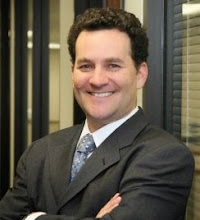John Harsanyi was born in Budapest, Hungary, in 1920. He attended the best mathematics school in Hungary and was a student of John Von Neumann, the father of game theory. As a Jew, Harsanyi would have been sent to a concentration camp in 1944, but he escaped from the train station and was given refuge in the basement of a Jesuit monastery. After the war, he left for Australia and, eventually, the United States. He was a professor emeritus of economics at my alma mater, U.C. Berkeley, until he passed in 2000. Harsanyi's autobiography, written on receiving the Nobel Prize, is here.
Harsanyi wrote a paper in 1962 entitled "Bargaining in ignorance of the opponent's utility function." The paper is brilliant and is available here.
Harsanyi begins by noting that most of existing game theory "is based on the assumption that the two parties know each other's utility functions ... [or] each other's preferences as well as each other's attitudes toward risk." Of course, in most real world interactions, we have at best sketchy information about our bargaining opponents, their preferences, and their attitudes about risk. And our opponents usually work very hard to keep this information from us, particularly in competitive situations.
"In bargaining, and more generally in all non-trivial game situations, the behavior of a rational individual will depend on what he expects the other party will do." Harsanyi explains that this dynamic is at play for both sides, so that what A does depends on what he expects B to do, which depends on what he expects A to do, ad infinitum. The result of these intertwined expectations is as follows:
[A] bargaining party faced with a presumably rational opponent cannot rationally expect this opponent to make a concession in a situation that he himself, following his own criteria of rational behavior, would refuse to make a concession. This imposes a strong symmetry requirement on the bargaining strategies that can be rationally chosen by two bargainers who expect each other to act rationally. This symmetry postulate, together with some other very natural postulates of rational behavior, then selects a unique solution (equilibrium agreement point) for each particular bargaining game.
If the parties know each other's preferences and attitudes about risk, the parties easily reach resolution. "This is so because both parties ... will accept, and will also expect each other to accept, the solution point as their agreement point."
The problem, as noted above, is that we normally do not know each other's "utility functions." Despite this, Harsanyi notes that people manage to resolve conflicts "much more often than mere chance would allow." And this is the point of the paper: What is it that allows parties to reach agreement in competitive situations, even though they do not know each other's preferences or attitudes toward risk?
Harsanyi provides an answer, which I will discuss in my next post.






Steve - Great piece on Harsanyis. Although his paper suggests limited value in mediating a dispute in the classical style, I believe there is tremendous value in going through the process. He, like most good economists, has to abstract out bits of "reality" to draw his conclusions. People are just more comlicated than most economists and mathematicians want to believe.
ReplyDeleteMy own experience suggests that most out of court settlements are driven by a client’s own lawyers “telling” them the “truth” about cost and probability of success - often after a painful but "unsuccessful" mediation. That's what good lawyers do.
Rick
I have recently been experimenting with going back to the old "joint session" model after many years of mediating primarily in separate caucus. The exciting and interesting thing is that it appears that both lawyers and clients need this face to face interaction before they are ready to make assessments about the other party's interests (and do some self-reflection on their own). Thanks for causing me to think about this, Steve.
ReplyDelete